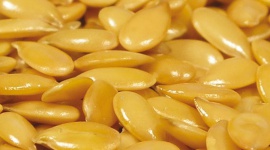Grower's Tip: Ventilation

You will first need to determine the amount of air to be exchanged in your grow room(s) to properly choose your ventilation equipment. Then when it comes to fans, there are many different brands and models on the market. Not to mention the hordes of copycats that mimic looks but rarely provide the power of the originals.
For your garden to perform, you need to move air, not dreams. Serious growers always favor buying products certified by credible HVAC associations like « AMCA » along with safety&quality control firms like CSA, ETL or UL. Malfunction of anything related to climate can have disastrous consequences on your yields. Don’t cheap out, you might lose way more than you saved!
Three things to consider when setting up your ventilation system:
1. The CFM number on the front of the box means NOTHING!
That CFM number is usually the maximum measured value obtained at 0 in. wg (zero inches water gauge) meaning no air restriction. This value is useless in the real world, because there will always be air flow restriction caused by ducting, elbows, dampers, etc. Serious fan manufacturers will provide charts indicating real CFM values in relation to air restriction (in. wg). Only with these charts can you best determine what fan size and power you really need. A good idea is also to get fans with more power than needed, as they are easy to dim but impossible to make stronger.
2. Size does not always mean performance
The power of the fan’s motor will greatly influence the output of your ventilation setup. You might find two fans of the same size, but one with an 180W motor and the other with a 280W. While both fans may have similar advertised CFM’s in free air, only the second one will keep decent output in real world conditions. Think of it like two Ford mustangs, one with the basic 4 cylinder engine and the other with ford’s legendary 5.0L V8. Both will be able to cruise at 100 miles per hour on flat prairie lands, but only the 5.0L will keep that speed going uphill in the Rockies.
3. Plan properly
Keep in mind that each turn your duct run takes has an impact on air movement. Make sure there will not be any unneeded twist and turns and install your ducting as straight as can be. If energy conservation is a factor, you might want to consider going for the newer « Mixed Flow » fans that, compared to older centrifugal models, are more compact, more energy efficient and more powerful.
Comparison of centrifugal and mixed flow designs*
| Fan model | RPM | Max Watts | CFMs remaining after air restriction (in. wg) | |||||||
| 0" | .125" | .25" | .375" | .5" | .75" | 1.0" | 1.25" | |||
| Centrifugal 10” | 2760 | 283 | 761 | 734 | 701 | 665 | 629 | 568 | 505 | 435 |
| Mixed Flow 10” | 2990 | 228** | 1019 | 985 | 950 | 920 | 885 | 815 | 705 | 535 |
*Both fans from the same manufacturer. **Note how mixed flow designs give more CFMs while using less power

Finally, make sure your climate measuring and controlling equipment is properly positioned in the garden to accurately assess conditions where the plants are. Favor digital controls with remote probes and sensors that can be placed within plant canopy, where it really matters, over wall-mounted models.
Good luck and Happy gardening.



